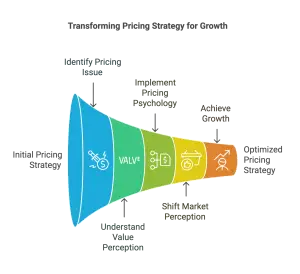Real time management is a crucial aspect of both personal and professional life, involving the effective management of tasks, decision-making, and goal-setting. It is a skill that allows individuals to prioritize their actions and make the most of their time, leading to increased productivity and achieving desired outcomes.
The concept of real time management has evolved over the years, with various techniques and tools being developed to help individuals manage their time effectively.
Table of contents
- Key Takeaways
- Introduction
- What is Real Time Management?
- The Eisenhower Method: A Time Management Technique
- The Urgent-Important Matrix: A Prioritization Tool
- Applying Real Time Management in Professional and Personal Life
- Common Time Management Mistakes and How to Avoid Them
- Tips for Effective Time Management
- Frequently Asked Questions
Key Takeaways
- Real time management involves effectively managing your time to achieve maximum productivity and efficiency.
- The Eisenhower Method and the Urgent-Important Matrix are two effective tools for prioritizing tasks and managing time.
- To effectively practice real time management, it is important to avoid common time management mistakes and follow tips such as setting clear goals and learning to say no.
Introduction
One popular time management technique is the Eisenhower Method, also known as the Urgent-Important Matrix. This method was created by former US President Dwight D. Eisenhower, who was known for his exceptional time management skills. It involves categorizing tasks based on their urgency and importance, allowing individuals to focus on critical tasks and avoid wasting time on unnecessary or less important tasks.
Another commonly used tool in real time management is the Urgent-Important Matrix, which is a prioritization framework that helps individuals determine the urgency and importance of tasks in relation to their goals and objectives. This tool is often used by productivity experts and is based on the principle that not all tasks are equally important and urgent.
Implementing effective time management strategies can have a significant impact on both professional and personal life. In the workplace, it can lead to increased productivity and efficiency, while in personal life, it can help individuals achieve a better work-life balance and focus on their long-term goals and aspirations.
However, there are common mistakes that individuals make in managing their time, such as failing to prioritize tasks, not setting clear goals, and trying to do too much at once. To avoid these mistakes and improve time management, it is essential to set SMART goals, prioritize tasks effectively, learn to say no, delegate tasks when possible, and limit time-wasting activities.
There are numerous examples of successful time management in real life, including figures such as Dwight D. Eisenhower, Stephen Covey, and an unnamed university president who managed to juggle various responsibilities and achieve success through effective time management.
What is Real Time Management?
Real time management is a crucial aspect of productivity and efficiency, both in personal and professional settings. But what exactly does it mean? In this section, we will delve into the concept of real time management and its relevance in today’s fast-paced world. We will also take a look at its origins and how it has evolved over time. Lastly, we will explore the importance of real time management and how it can positively impact our daily lives.
Understanding the Concept
To be successful in utilizing time effectively, it is essential to grasp the concept of real time management. This refers to the practice of staying mindful and concentrated on tasks as they occur, without any delay or procrastination. It entails being aware of priorities, handling distractions, and making prompt decisions. By comprehending the concept of real time management, individuals can enhance productivity, decrease stress, and attain a healthier work-life balance. This approach enables a more efficient use of time and aids individuals in staying on track with their objectives and obligations.
From cavemen drawing on cave walls to CEOs using advanced technology, real time management has a long and ever-evolving history.
History of Real-Time Management
Real-time management has a rich history, dating back to the early 20th century with the introduction of telegraphs and telephones. However, it wasn’t until the 1970s, with the development of computer systems capable of real-time data processing, that the concept gained significant momentum. As technology continued to advance, businesses began to recognize the importance of managing and responding to information in real-time in order to stay competitive. In today’s fast-paced digital world, where immediate decision-making and response times are crucial, real-time management has become increasingly vital. By understanding the history of real-time management, one can gain insights into its evolution and appreciate its significance in optimizing productivity and efficiency.
Because let’s face it, time is precious and we can’t afford to waste it on unimportant things.
Importance of Real Time Management
Real-time management is crucial for productivity and success in both professional and personal life. It involves effectively utilizing time, staying organized, and prioritizing tasks. By implementing techniques like the Eisenhower Method and the Urgent-Important Matrix, individuals can make informed decisions, avoid overwhelm, and focus on high-priority tasks.
The importance of real-time management cannot be understated, as it helps individuals meet deadlines, improve efficiency, reduce stress, and achieve work-life balance. Additionally, it ensures that important tasks are not neglected and allows individuals to make the most of their time. In today’s fast-paced world, mastering real-time management is essential for individuals to stay on top of their responsibilities and achieve their goals.
Fun Fact: Studies have shown that individuals who practice effective time management tend to have higher levels of productivity and satisfaction in both their personal and professional lives.
The Eisenhower Method: A Time Management Technique
The Eisenhower Method, also known as the Eisenhower Matrix, is a popular time management technique that helps individuals prioritize tasks based on their urgency and importance. Named after Dwight D. Eisenhower, the 34th President of the United States known for his efficient use of time, this method has been proven effective in increasing productivity. Here are the steps to implement the Eisenhower Method:
- Start by making a list of all tasks.
- Categorize each task as urgent and important, urgent but not important, important but not urgent, or neither urgent nor important.
- Focus on completing the tasks that are both urgent and important first.
- Delegate or schedule tasks that are important but not urgent.
- Eliminate or minimize tasks that are neither urgent nor important.
Who is Dwight D. Eisenhower?
Dwight D. Eisenhower was a prominent figure in American history, known for serving as the 34th President of the United States from 1953 to 1961. Prior to his presidency, Eisenhower had a distinguished military career, rising to the rank of five-star general during World War II. He played a crucial role in planning and executing the Allied invasion of Normandy, also known as D-Day.
Beyond his military accomplishments, Eisenhower was also recognized for his leadership and strategic thinking, earning him respect and admiration in fields such as time management. In fact, the Eisenhower Method, a time management technique named after him, helps individuals prioritize tasks based on their urgency and importance.
How Does the Eisenhower Method Work?
The Eisenhower Method is a time management technique that helps individuals prioritize tasks based on their urgency and importance. Here are the steps to implement the Eisenhower Method:
- Create a list of tasks: Write down all the tasks that need to be done.
- Evaluate urgency: Determine the time sensitivity of each task.
- Assess importance: Consider the significance and impact of each task.
- Assign priorities: Categorize tasks into four quadrants: Urgent and Important, Not Urgent but Important, Urgent but Not Important, and Not Urgent and Not Important.
- Take action: Start with tasks in the Urgent and Important quadrant, then move on to the other quadrants.
The Eisenhower Method is named after Dwight D. Eisenhower, the 34th President of the United States, who was known for his exceptional time management skills. He utilized a similar approach to prioritize tasks during his presidency and military career.
Benefits of Using the Eisenhower Method
Using the Eisenhower Method for time management offers several benefits, including:
- Clear Prioritization: This method helps individuals distinguish between urgent and important tasks, allowing them to focus on high-priority activities.
- Enhanced Productivity: By effectively prioritizing tasks, individuals can use their time and energy more efficiently, leading to increased productivity.
- Reduced Stress: With a clear plan and prioritized tasks, individuals can experience reduced stress levels and feel more in control of their workload.
- Improved Decision-Making: The Eisenhower Method encourages thoughtful decision-making by considering the importance and urgency of tasks, resulting in better choices.
- Time and Energy Savings: By eliminating or delegating less important tasks, individuals can save time and energy for tasks that truly matter, resulting in greater overall efficiency.
Incorporating the Eisenhower Method into daily routines can lead to improved time management and better outcomes in both professional and personal life.
The Urgent-Important Matrix: A Prioritization Tool
The Urgent-Important Matrix is a highly effective tool for prioritizing tasks and managing time efficiently. It divides tasks into four quadrants:
- Urgent and Important: These tasks demand immediate attention and should be addressed first.
- Important but Not Urgent: These tasks hold significance but can be scheduled for a later time to avoid last-minute stress.
- Urgent but Not Important: These tasks may seem pressing, but they do not contribute to long-term goals. Delegation or elimination is recommended.
- Not Urgent and Not Important: These tasks are time-wasters and should be avoided or minimized.
Pro-tip: Regularly reviewing and updating the Urgent-Important Matrix is crucial for maintaining focus and effectively prioritizing tasks.
What is the Urgent-Important Matrix?
The Urgent-Important Matrix is a prioritization tool that helps individuals effectively manage their time by categorizing tasks into four quadrants based on their level of urgency and importance. It distinguishes between tasks that require immediate attention and those that contribute to long-term goals. This matrix is helpful in identifying tasks that are both urgent and important, allowing individuals to focus on high-priority activities. By utilizing this matrix, individuals can effectively allocate their time and resources, reduce stress, and increase productivity.
In summary, the Urgent-Important Matrix is a valuable tool for prioritizing tasks and making well-informed decisions about time management.
Fun Fact: The Urgent-Important Matrix was made popular by Stephen Covey in his book “The 7 Habits of Highly Effective People.”
How to Use the Urgent-Important Matrix
To effectively use the Urgent-Important Matrix for prioritization, follow these steps:
- Identify tasks: Write down all the tasks you need to complete.
- Evaluate urgency: Assess the urgency of each task and determine if it requires immediate attention.
- Consider importance: Determine the importance of each task by evaluating its impact on your goals or overall success.
- Categorize tasks: Place each task into one of the four quadrants of the matrix – Urgent and Important, Urgent but Not Important, Not Urgent but Important, or Not Urgent and Not Important.
- Focus on Quadrant 1: Give top priority to tasks in the Urgent and Important quadrant, completing them as soon as possible.
- Delegate or schedule: For tasks in Quadrant 2, delegate to others if possible or schedule them for later completion.
- Eliminate or minimize Quadrant 3: Evaluate tasks in Quadrant 3 and determine if they can be minimized or eliminated without negative consequences.
- Avoid Quadrant 4: Tasks in Quadrant 4 are low-priority and should be avoided or minimized to prevent wasting time.
Remember, effectively utilizing the Urgent-Important Matrix can assist you in prioritizing tasks, managing your time efficiently, and achieving your goals more effectively.
Don’t let urgent tasks distract you from the truly important ones – use the Eisenhower Method to prioritize like a pro!
Tips for Effective Prioritization Using the Urgent-Important Matrix
Effective prioritization using the Urgent-Important Matrix can greatly improve time management. Here are some tips for making the most of this prioritization tool:
- Define Urgent and Important: It is crucial to understand the difference between tasks that are urgent (requiring immediate attention) and tasks that are important (aligned with long-term goals).
- Categorize Tasks: Place each task into one of the four quadrants of the matrix: Urgent and Important, Not Urgent but Important, Urgent but Not Important, and Not Urgent or Important.
- Focus on Quadrant 2: Give priority to tasks in the Not Urgent but Important quadrant, as they contribute to long-term goals and prevent last-minute urgency.
- Delegate or Eliminate: Delegate tasks in the Urgent but Not Important quadrant to others or eliminate them if they do not add value.
- Manage Procrastination: Overcome the tendency to focus on Not Urgent or Important tasks by setting deadlines and holding yourself accountable.
- Regularly Review and Adjust: Continuously review and adjust your tasks in the matrix to ensure effective prioritization.
Remember, even if you can’t control time, you can control how you manage it in both your professional and personal life with real time management techniques.
Applying Real Time Management in Professional and Personal Life
Real time management is a valuable skill that can greatly improve both our professional and personal lives. In this section, we will discuss how real time management can be applied in both the workplace and our personal lives. We will explore techniques and strategies for effectively managing tasks and time in a fast-paced and dynamic environment. Additionally, we will discuss the importance of balancing work and personal life and how real time management can help us achieve this.
Real Time Management in the Workplace
Effective real-time management in the workplace is essential for maintaining high levels of productivity and efficiency. It involves actively monitoring and addressing tasks as they arise, maximizing available resources, and minimizing delays. This approach enables quick decision-making and efficient coordination among team members.
To implement real-time management in the workplace, it is crucial to establish clear goals, prioritize tasks, and delegate responsibilities. Additionally, utilizing tools and technologies that facilitate real-time communication and collaboration is essential. By embracing this approach, organizations can ensure the timely completion of projects, improve customer satisfaction, and optimize resource allocation.
Ultimately, embracing real-time management in the workplace leads to streamlined operations, enhanced teamwork, and overall success.
Real-Time Management in Personal Life
Incorporating real-time management in personal life can greatly enhance productivity and reduce stress levels. Here are some helpful tips for effectively managing your personal life in real-time:
- Prioritize tasks: Start by identifying the most important and urgent tasks to tackle first.
- Set SMART goals: Make sure your goals are Specific, Measurable, Achievable, Relevant, and Time-bound.
- Learn to say no: Avoid overcommitting yourself and learn to decline requests that do not align with your priorities.
- Delegate tasks when possible: Share responsibilities with others to lighten your workload and create more time for important tasks.
- Minimize distractions: Limit time spent on social media, turn off notifications, and create a designated workspace to maximize focus and efficiency.
By implementing these strategies, you can effectively manage your time and achieve a healthier work-life balance.
Common Time Management Mistakes and How to Avoid Them
Effective time management is crucial for success in both personal and professional endeavors. However, many of us fall into common traps that hinder our productivity and efficiency. In this section, we will discuss five common time management mistakes and provide practical solutions for avoiding them. By becoming aware of these pitfalls and implementing effective strategies, you can take control of your time and achieve your goals.
1. Failing to Prioritize Tasks
When it comes to time management, not prioritizing tasks can result in inefficiency and decreased productivity. To avoid this common mistake, follow these steps:
- Make a list: Write down all the tasks that need to be completed.
- Assess importance: Evaluate the significance of each task based on deadlines, impact, and goals.
- Identify urgency: Determine which tasks require immediate attention or have time-sensitive deadlines.
- Rank tasks: Prioritize tasks based on both importance and urgency.
- Create a schedule: Allocate time for each task in your daily or weekly schedule.
- Focus on top priorities: Start with the most important and urgent tasks to ensure they are completed on time.
- Reevaluate regularly: Continuously reassess and adjust priorities as needed.
By following these steps, you can effectively prioritize tasks and manage your time more efficiently.
Without clear goals, you’ll be as lost as a GPS without a destination.
2. Not Setting Clear Goals
When it comes to effective time management, not setting clear goals can be a major pitfall. To avoid this mistake, consider the following steps:
- Reflect on your overall objectives: Take the time to identify your long-term goals and aspirations.
- Break goals into smaller tasks: Divide your goals into manageable and actionable steps.
- Specify deadlines: Set clear deadlines for each task to stay focused and track progress.
- Prioritize tasks: Determine which tasks are most important and tackle those first.
- Communicate goals: Share your goals with others to gain accountability and support.
By following these steps and ensuring clear goals, you can enhance your time management skills and achieve greater productivity.
Remember, you’re not a superhero – prioritize and conquer one task at a time for more effective real time management.
3. Trying to Do Too Much at Once
Trying to do too much at once is a common time management mistake that can lead to stress, inefficiency, and burnout. To avoid this, follow these steps:
- Prioritize tasks: Determine which tasks are most important and urgent.
- Break tasks into smaller steps: Divide big tasks into smaller, manageable parts.
- Create a schedule: Allocate specific time slots for each task to ensure focus and avoid overload.
- Set realistic expectations: Be honest about what can be accomplished in a given timeframe.
- Practice self-care: Take breaks, exercise, and recharge to maintain mental and physical well-being.
- Delegate when possible: Identify tasks that can be handed off to others to lighten the workload.
- Learn to say no: Don’t take on additional tasks if it will compromise your ability to complete existing ones effectively.
If you want something done right, give it to someone else to do – it’s called delegation.
4. Not Delegating Tasks
To avoid the mistake of not delegating tasks in time management, follow these steps:
- Identify tasks that can be assigned to others, freeing up your time for more important responsibilities.
- Evaluate the skills and capabilities of your team members to determine who is best suited for each task.
- Communicate clearly with your team, explaining the tasks and expectations clearly.
- Provide necessary training or resources to ensure that the delegated tasks can be completed successfully.
- Establish a system for monitoring progress and providing feedback to ensure tasks are on track and to address any issues that may arise.
By effectively delegating tasks, you can lighten your workload and promote productivity within your team.
Don’t let distractions be the boss of your time, be the boss of your own real time management.
5. Allowing Distractions to Take Over
Allowing distractions to take over can significantly hinder productivity and time management. To overcome this challenge, follow these steps:
- Identify common distractions: Recognize the activities or situations that frequently divert your attention.
- Create a distraction-free environment: Minimize interruptions by finding a quiet space and eliminating potential distractions like notifications or clutter.
- Establish boundaries: Set clear boundaries, such as turning off non-essential notifications or establishing specific work hours.
- Practice mindfulness: Stay present and focused on the task at hand, avoiding the temptation to switch tasks or check unrelated websites.
- Use productivity tools: Utilize apps or browser extensions that block distracting websites or limit screen time.
Pro-tip: Prioritize deep work sessions, dedicating uninterrupted blocks of time to tackle complex or important tasks. This allows for increased concentration and productivity.
No time to waste, prioritize like your life depends on it – because it does.
Tips for Effective Time Management
Time management is a crucial skill for success in both personal and professional life. By effectively managing our time, we can increase productivity, reduce stress, and achieve our goals more efficiently. In this section, we’ll discuss key tips for effective time management that can be applied in any situation. From setting SMART goals to learning to say no, we’ll explore practical strategies to help you make the most of your time and improve your overall productivity.
1. Set SMART Goals
Setting SMART goals is a crucial aspect of effective time management. To set SMART goals, follow these steps:
- Specific: Clearly define what you want to achieve. Avoid vague goals like “do better at work.” Instead, aim for something specific, like “increase sales by 10%.”
- Measurable: Establish criteria to track your progress. This could be a specific number, percentage, or any other quantifiable measure.
- Achievable: Ensure that your goals are realistic and attainable. Consider your resources, capabilities, and limitations.
- Relevant: Align your goals with your overall objectives. They should be meaningful and contribute to your long-term success.
- Time-bound: Set a deadline for achieving your goals. This adds a sense of urgency and helps prioritize tasks.
Historically, the SMART goal-setting framework was introduced by George T. Doran in the 1980s as a way to improve the effectiveness of goals in management and planning processes.
2. Prioritize Tasks Effectively
To effectively prioritize tasks, follow these steps:
- Create a comprehensive task list.
- Evaluate the importance and urgency of each task.
- Utilize a prioritization framework, such as the Eisenhower Matrix.
- Identify tasks that are both important and urgent, and tackle them first.
- Delegate tasks that are important but not urgent.
- Consider the potential impact and consequences of not completing certain tasks.
- Focus on one task at a time to maintain productivity.
Pro-tip: Regularly review and adjust your task priorities to stay on top of your workload and achieve optimal efficiency.
3. Learn to Say No
Learning to say no is an essential skill in effective time management.
- Evaluate your priorities: Determine what tasks align with your goals and values.
- Consider the impact: Assess how saying yes or no to a request will affect your time, energy, and productivity.
- Practice assertiveness: Politely decline requests that don’t align with your priorities. Offer alternatives or suggest someone else who can help.
- Set boundaries: Establish clear boundaries and communicate them to others. Learn to say no without feeling guilty.
- Delegate tasks: If possible, delegate tasks to others who are better equipped to handle them.
4. Delegate Tasks When Possible
Delegate tasks when possible to optimize time management and productivity.
- Identify tasks that can be delegated to others based on their skills and capabilities.
- Clearly communicate expectations and provide necessary guidance to ensure successful task completion.
- Trust and empower team members to take ownership of delegated tasks.
- Regularly follow up and provide support to address any challenges or questions that may arise.
- Review and evaluate the outcomes of delegated tasks to identify areas for improvement.
Frequently Asked Questions
What is Real Time Management (RTM)?
Real Time Management (RTM) is a powerful framework that focuses on getting things done in a timely and effective manner. It involves the coordination of human and financial resources, as well as the development of leadership and management skills.
How does RTM help with large scale events?
RTM helps with large scale events by providing a robust framework for event production and management. This includes tasks such as festival budgeting, vendor agreements, pulling permits, staffing, and coordinating audio and video needs. By proactively managing these critical areas, RTM helps protect service levels and ensures the success of the event.
What are the core practice goals of RTM?
The core practice goals of RTM include effective management action, good adherence to schedules, and proactively managing performance threats. By achieving these goals, RTM helps improve efficiency, protect service levels, and provide a competitive advantage for businesses.
How does RTM impact financial organizations?
RTM can have a significant impact on financial organizations by helping them meet business targets, cover costs, and identify ancillary revenue opportunities. By effectively managing resources and proactively monitoring volumes, RTM helps businesses stay on track and maximize their financial results.
What are some common challenges that RTM can help address?
Some common challenges that RTM can help address include wasted budget due to poor schedule adherence, service levels not being met, and high agent idle time. RTM can also aid in managing patient appointments and protecting service levels in high volume situations.
How can businesses benefit from using RTM?
Businesses can benefit from using RTM by improving their workforce management, creating more productive teams, and meeting customer service expectations. RTM also offers ancillary services such as event management, which can generate additional revenue. By utilizing the knowledge and expertise of the RTM team, businesses can also establish long-lasting partnerships and improve their overall performance.





